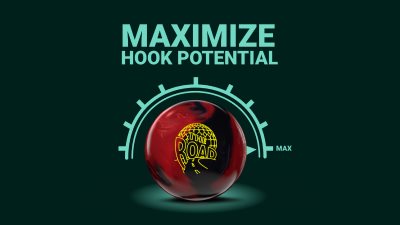Bowling on a lane when your ball doesnt hook enough can present a challenge. When faced with this situation, there are several adjustments you can make to improve your performance and increase your hook potential and hit the pins effectively. Here are some key strategies to consider:
Surface Adjustments: If your bowling ball is skidding too much and struggling to transition into a roll on the oily lane surface, one effective solution is to adjust the surface of the ball. By using Abralon pads or similar sanding tools, you can modify the surface texture of the ball to increase friction with the lane. This increased friction helps the ball grip the lane earlier, allowing it to hook sooner and more aggressively. Experiment with different grits of Abralon to find the optimal surface texture for the specific oil conditions you're facing.
Equipment Selection: Choosing the right bowling ball is crucial when it’s not hooking enough. Opt for a ball with a strong coverstock and an asymmetrical core design. Solid coverstocks offer more traction on oily lanes compared to pearl or hybrid coverstocks, allowing the ball to grip the lane surface better. Additionally, asymmetrical core designs provide increased hook potential, making them ideal for combating heavy oil patterns. Consult with your pro shop professional to select a ball that suits your playing style and the lane conditions you're encountering.
Targeting: Adjusting your targeting can also help compensate for excessive oil on the lanes. Consider moving outside and playing a straighter line up the boards. By minimizing the launch angle onto the lane, your ball won't have to cover as much distance across the oil, reducing skid and allowing it to hook earlier. Experiment with different starting positions and angles to find the optimal line for your game.
Release: Refining your release technique can significantly impact your ball's reaction on oily lanes. For more advanced bowlers, using an end-over-end release or a low axis of rotation can increase friction and promote an earlier hook. These release styles reduce skid and encourage a smoother transition from skid to hook, resulting in improved overall performance.
Reducing Speed to Improve Traction: In addition to surface adjustments, equipment selection, targeting changes, and release refinements, another important factor to consider when dealing with a Ball thats not hooking enough is your ball speed. Reducing your speed can significantly impact your ball's reaction on the lane surface, particularly in terms of reducing skid and helping the ball gain traction earlier.
Considerations To Think About: While surface adjustments, equipment selection, targeting changes, and release refinements are essential strategies for maximizing hook potential, it's crucial to recognize the possibility of encountering ball burn, especially if your ball reaction remains inconsistent despite your efforts.
Understanding Ball Burn: Ball burn occurs when the bowling ball loses energy too quickly as it travels down the lane, resulting in an abrupt hook or a lack of continuation through the pins. This can happen when the ball encounters excessive friction or oil depletion on the lane surface, causing it to expend its energy prematurely.
By making surface modifications to your bowling ball, selecting the right equipment, adjusting your targeting, and refining your release technique, you can enhance your ability to hook the ball effectively and conquer even the oiliest of lane conditions. Experiment with these strategies during practice sessions and competitions to find the approach that works best for you. With persistence and adaptation, you can overcome the challenges posed by heavy oil patterns and elevate your bowling game to new heights.
